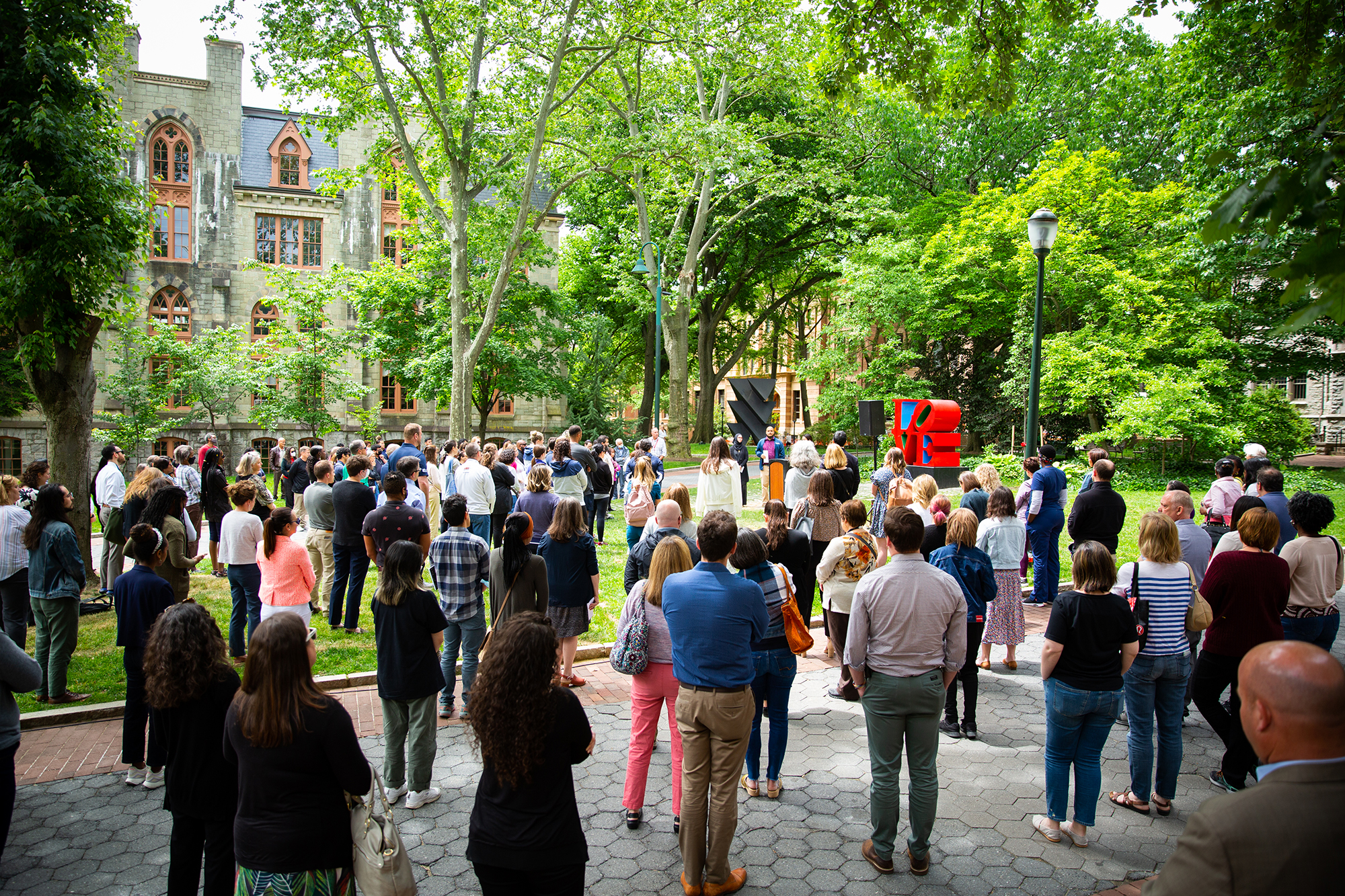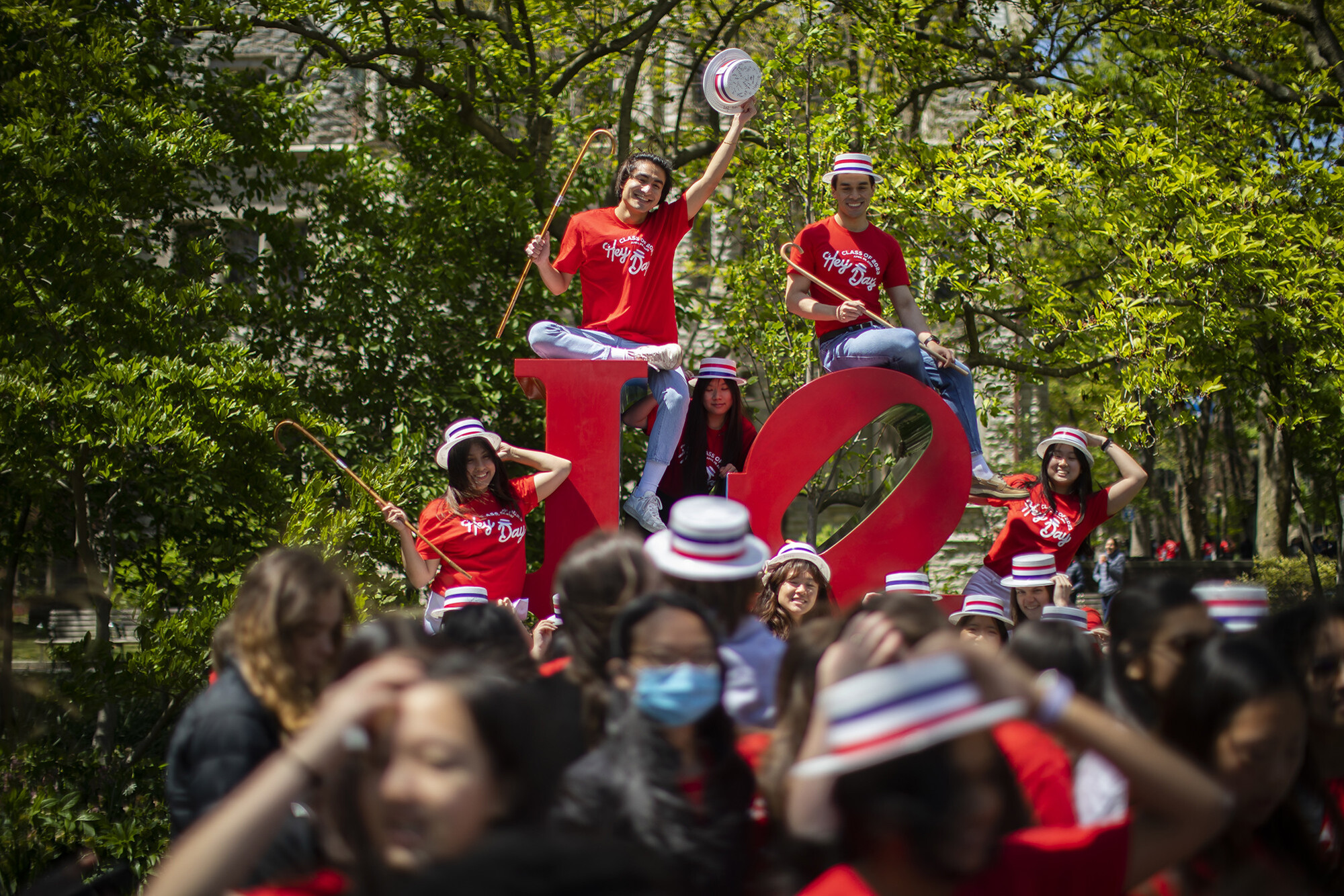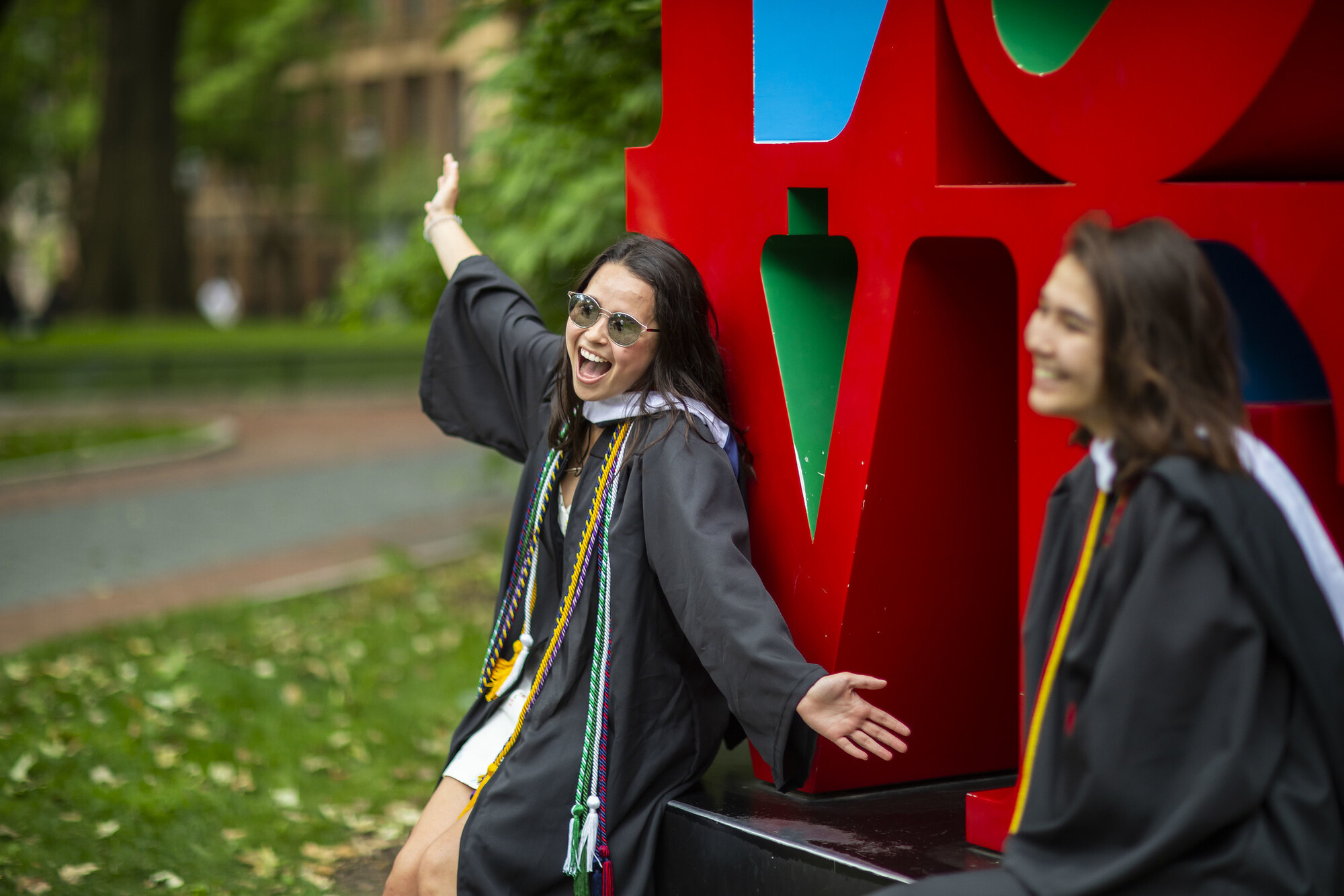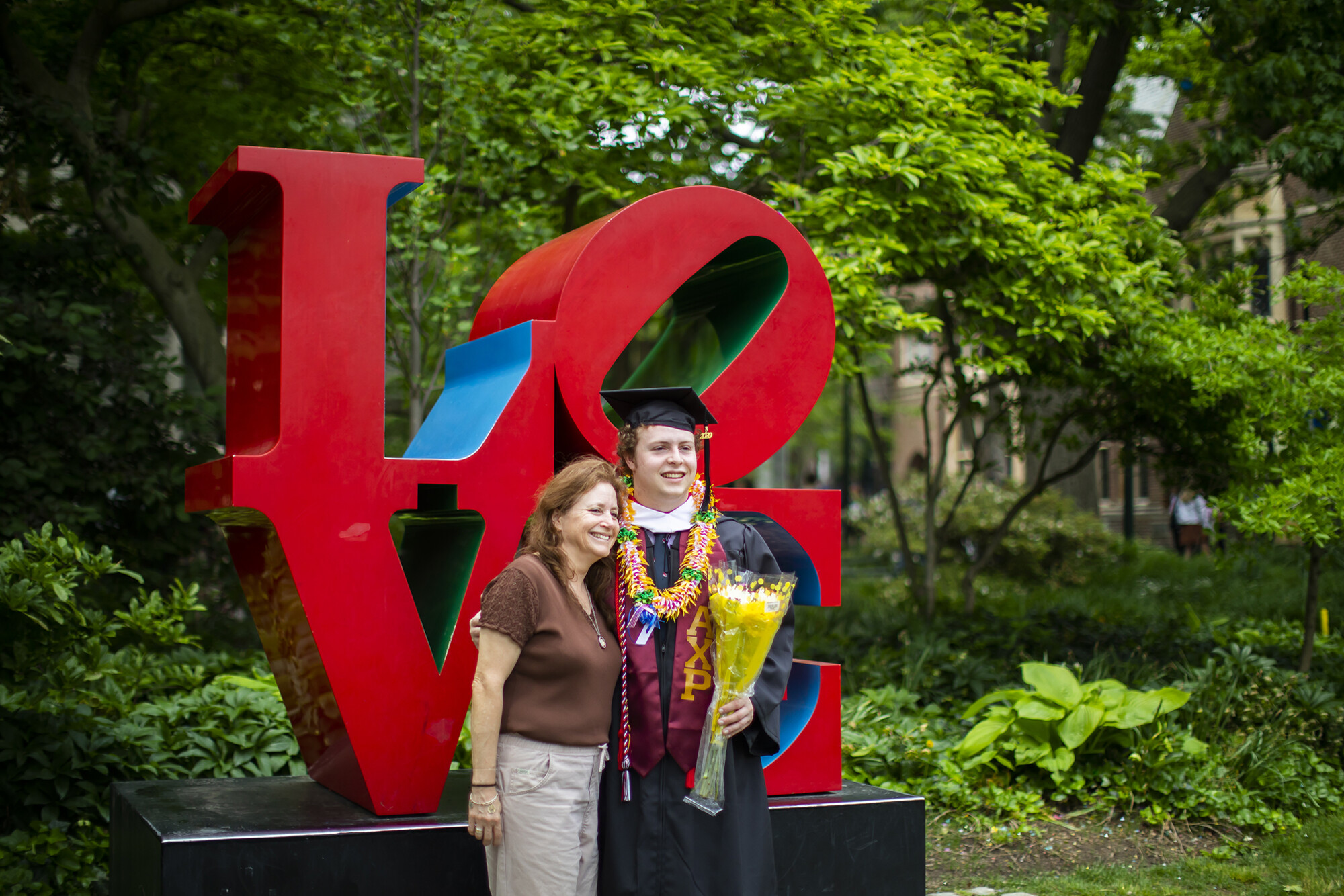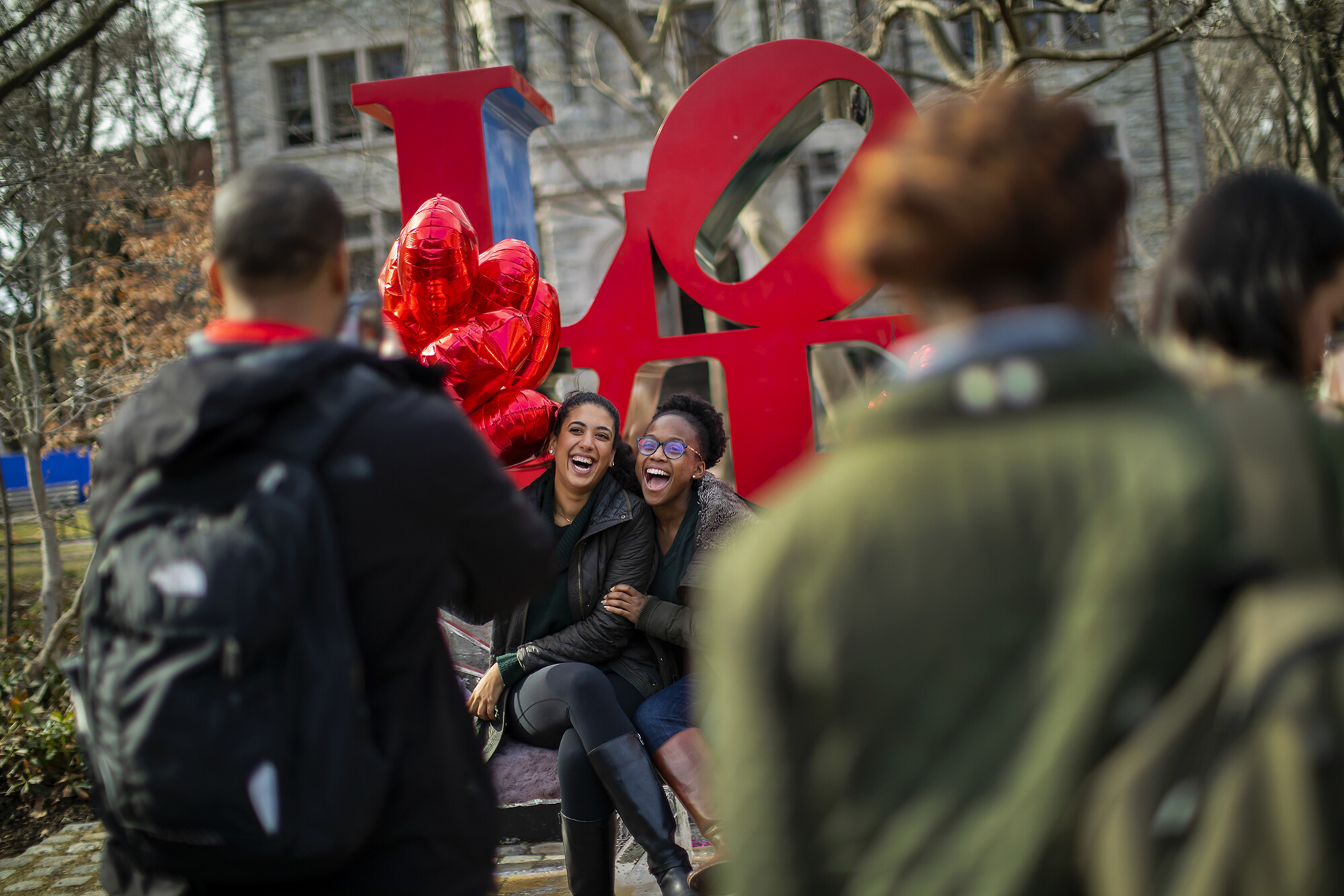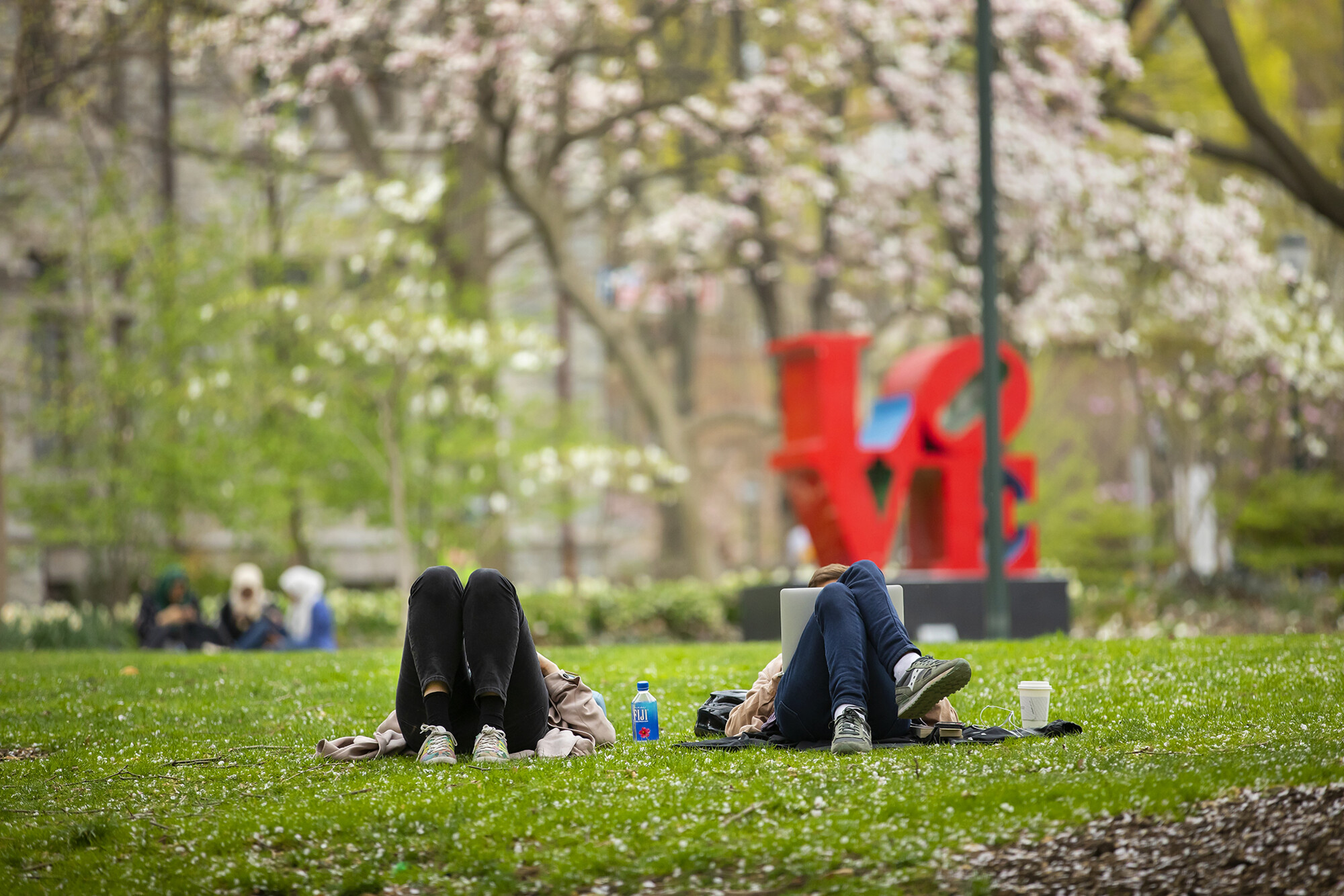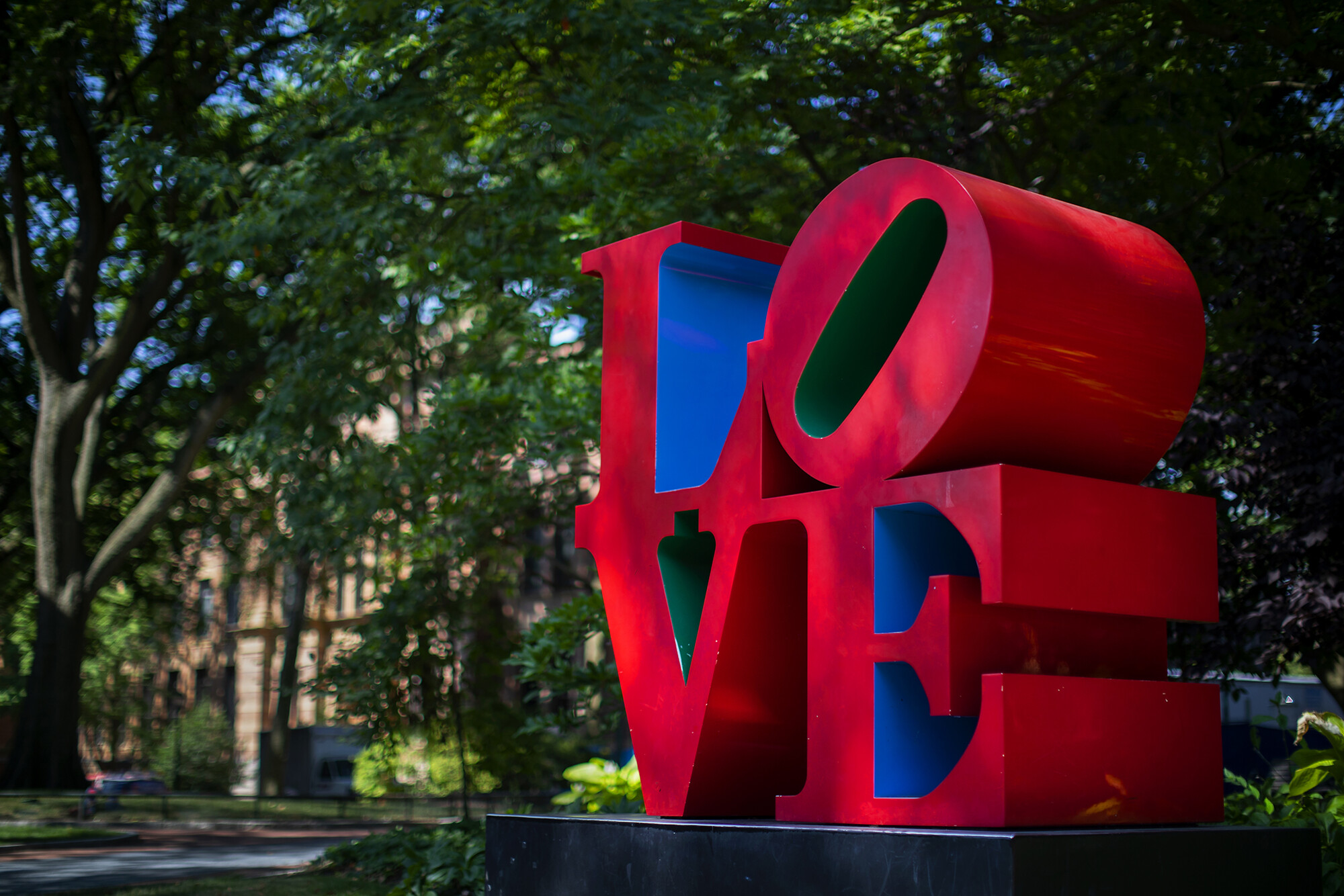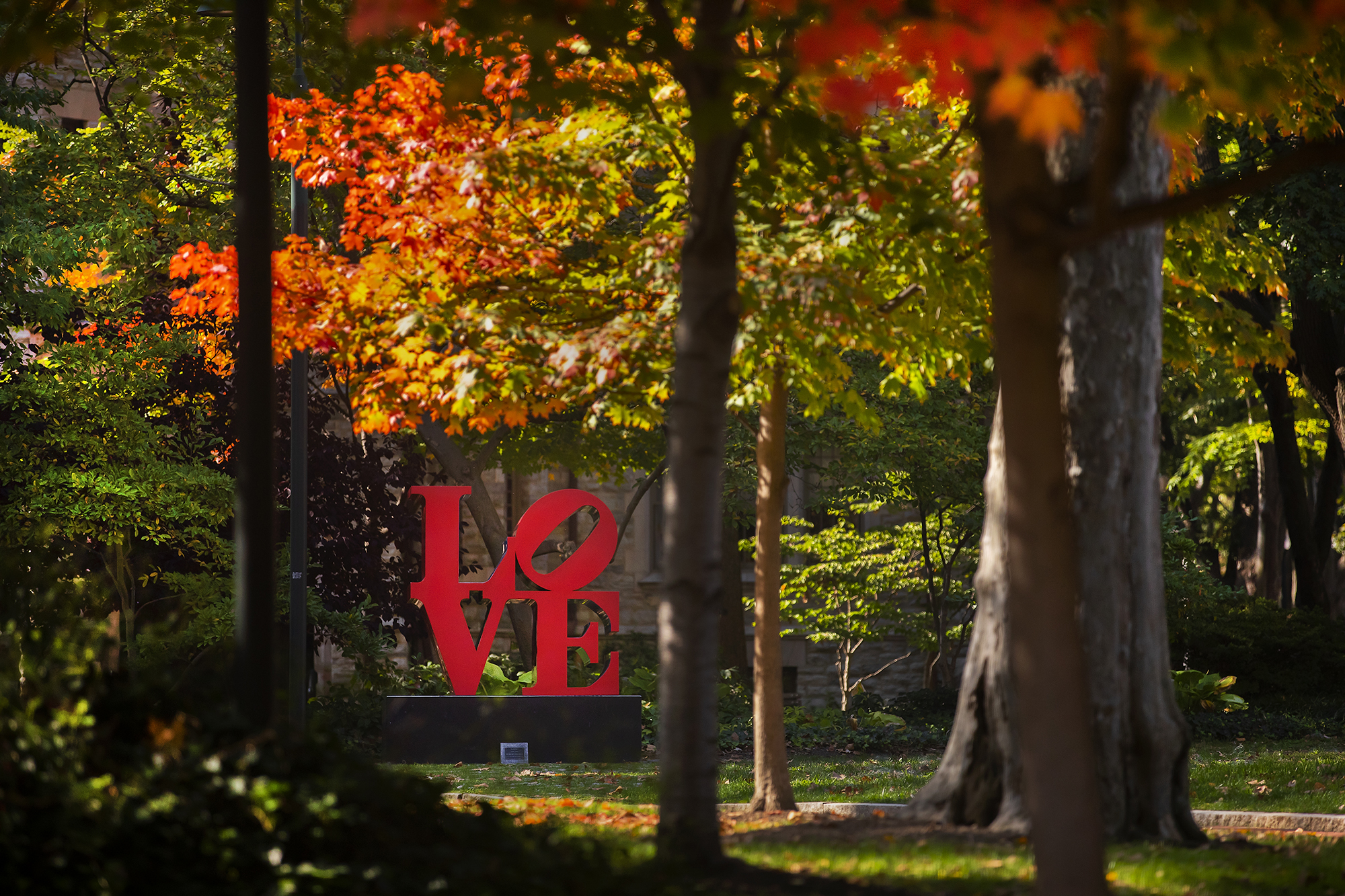
“Love loves to love love,” James Joyce wrote in his novel “Ulysses.” And Penn loves to love its “LOVE,” at the heart of campus for 25 years. The iconic sculpture by pop artist Robert Indiana arrived in 1999 and soon became a gathering place and a backdrop for snapshots and selfies.
“It’s become the natural convening spot over the years,” says University Chaplain Charles “Chaz” Lattimore Howard. A 2000 graduate, Howard remembers when the sculpture arrived, providing a “lovely upgrade” to College Green. “It’s hard to imagine anything but the ‘LOVE’ statue being there.”
It is “LOVE” that Howard chooses for moments solemn and celebratory: small weddings, candlelight vigils, memorial services, moments of silence. Students often meet there, and long lines form during Commencement for photos in caps and gowns.
“I think it’s a beautiful reminder to all the members of our Penn community who walk by it every day,” Howard says, “that beyond the brilliance of those on campus, the most important thing at the end of the day is love.” It is also a reminder, he says, “of our deep connection to the greater city of Philadelphia.”
Penn’s is one of two “LOVE” sculptures in the City of Brotherly Love. The first was installed in 1976 in what is now known as Love Park, across the street from City Hall in Center City, according to the Association for Public Art. And in 2015, the city added Indiana’s “AMOR” sculpture nearby, in honor of the visit by Pope Francis. They are among dozens of iterations of Indiana’s sculpture on view in cities around the world.
With the “O” tilted to the right, “LOVE” is “one of the most recognizable images of the 20th century,” says Lynn Smith Dolby, director of the Penn Art Collection.
‘LOVE’ through the ages
The artist, born Robert Clark in Indiana in 1928, rose to fame in the 1960s. His red-blue-green “LOVE” illustration was chosen by New York’s Museum of Modern Art in 1965 for its Christmas card, and quickly became a pop culture symbol. In 1970, Indiana created the first “LOVE” sculpture, in unpainted steel, which is in the Indianapolis Museum of Art. In 1973 the tricolor illustration appeared on a best-selling 8-cent U.S. postage stamp, with more than 300 million printed, according to the U.S Postal Museum.
Penn’s “LOVE” sculpture was created in 1996, the fourth in an edition of six, Dolby says. Made of polychrome aluminum, it is 6 feet square and 3 feet deep and weighs 500 pounds, she says. It is painted red, with blue on the interior of the “L” and the “E,” and green on the interior of the “O” and the “V.”
The sculpture was donated by Jeffrey Loria, who has given several important works of art to the University, Dolby says, including sculptures “King Soloman” by Alexander Archipenko, “Jean D’Aire” by Auguste Rodin, and “Grand Venus” by Pierre-Auguste Renoir, as well as paintings by Henri Matisse and Henry Moore.
When installed in 1999, “LOVE” took the place of the “We Lost” geometric sculpture by artist Tony Smith, which was conserved and placed in front of the Singh Center for Nanotechnology at 33rd and Walnut streets, Dolby says.
Of all the sculptures on campus, “LOVE” most often needs conservation, such as cleaning, repair, and repainting, Dolby says. Unlike the “LOVE” in Center City, which is elevated on a platform, Penn’s sits on a painted aluminum base and footing that together are only 2-1/2 feet high, fronted by a brick plaza in a grassy triangle on Locust Walk near College Hall.
It was a deliberate decision, Dolby says, to make the sculpture within reach, even if people climb on it to pose for photos or choose to do things that may cause damage. For memorials, students have covered the sculpture with dozens of low-adhesive Post-it notes, or filled it with candles that dripped wax. When Russia invaded Ukraine two years ago, the sculpture was wrapped in blue and yellow tape; sections of paint came off when the tape was removed, and the sculpture had to be repaired and repainted.
“Part of having a public art piece is the fact that people frequently interact with it,” Dolby says. “We take on the responsibility of conserving it as we need to. Part of my job is keeping the sculptures safe and making sure they are well cared for, but I do balance that with the idea that they need to be accessible.”
Public art is often used as a tool for branding of civic spaces, says Ken Lum, the Marilyn Jordan Taylor Presidential Professor and chair of fine arts in the Weitzman School of Design.
“The period of pop art was a more irreverent, even hopeful period in American society. There was this sense that you can play with meanings in a more open way than today, when meanings are often contested,” says Lum, an artist who creates sculpture for public spaces. “It’s a work that adds to the image of Penn as a place of openness, and for many as a place of affection.”
Lum notes that “LOVE” is in also view of the “Peace Symbol,” created by eight Penn students in 1967. “When I walk between them as I walk towards the Charles Addams Fine Arts building, I always look at the two sculptures as bookends to the question of ‘What is a countercultural space?’” Lum says.
Michael Leja, history of art professor, includes Indiana in his classes as one of the core artists early in the pop art movement, known for his interest in roadside signs and the typeface of advertising that was commonplace in the U.S. from the mid-40s to the mid-60s.
Some students are surprised that they study “LOVE,” he says, thinking of the sculpture as a sentimental emoji, or a meme that’s gone viral. “Everybody knows it,” he says, but most haven’t given it much consideration.
“I ask the students to look at it and think about why it has the form it has. Why did Indiana decide to stack the letters into a square? And why did he tilt the ‘O’? What might have been a motivation for that, or more importantly, what kind of effect does that have? What if the ‘O’ was in a different orientation, tilted horizontally or tilted backward?”
Resulting discussions often focus on how the sculpture depicts love itself, as encompassing or fragile or unstable or commodified, Leja says. “If you think about it as having multiple meanings, multiple attitudes, that might make you look at it in a different way,” Leja says.
A personal ‘LOVE’ connection
The word love, of course, is threaded through our lives in myriad ways; music, film, theater, literature, and art. And for two Penn English professors in the School of Arts & Sciences, it is their name.
“When I first arrived on campus, I was pleasantly surprised to see a big version of this ‘LOVE’ with the tilted ‘O,’ ” says Heather Love. “It made me feel at home, perhaps a bit like Benjamin Franklin might feel if he were to walk through campus.”
Paul Saint-Amour is teaching “Ulysses” this semester. “My surname means ‘holy love,’ so I’ve had the word ‘love’ looping in my ear all my life,” he says. “It’s one reason I’m drawn to that sentence in Joyce, ‘Love loves to love love.’ If you repeat a word enough times, it starts to shake free from sense.”
The same thing happens, he points out, in The Beatles 1967 hit, “All You Need is Love,” which starts by repeating the word “love” nine times.
“It’s a deceptively simple word for such a huge universe of feelings and phenomena,” Saint-Amour says. “Maybe that capaciousness makes the word a hearth where people want to gather physically.”
“LOVE” is the last stop on the campus art tour Dolby gives during Homecoming and Alumni Weekends, when different generations often come together there. “The sculpture brings such joy,” she says. “Especially when leading an alumni group, just to leave them with this feeling of warmth and community and the sense of being connected.”
Lynn Smith Dolby is director of the Penn Art Collection at the University of Pennsylvania.
The Rev. Charles “Chaz” Lattimore Howard is the University Chaplain and Vice President for Social Equity & Community at Penn.
Michael Leja is the James and Nan Wagner Farquhar Professor of History of Art in the School of Arts & Sciences.
Heather Love is a professor of English in the School of Arts & Sciences.
Ken Lum is the Marilyn Jordan Taylor Presidential Professor and chair of fine arts in the Weitzman School of Design.
Paul Saint-Amour is the Walter H. and Leonore C. Annenberg Professor in the Humanities in the School of Arts & Sciences.




